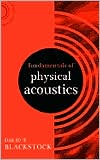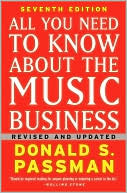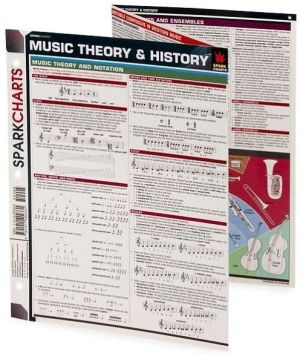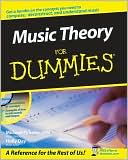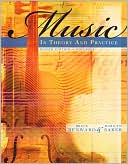Fundamentals of Physical Acoustics
AN AUTHORITATIIVE, UP-TO-DATE INTRODUCTION TO PHYSICAL ACOUSTICS\ Easy to read and understand, Fundamentals of Physical Acoustics fills a long-standing need for an acoustics text that challenges but does not overpower graduate students in engineering and physics. Mathematical results and physical explanations go hand in hand, and a unique feature of the book is the balance it strikes between time-domain and frequency-domain presentations.\ Fundamentals of Physical Acoustics is intended for a...
Search in google:
AN AUTHORITATIIVE, UP-TO-DATE INTRODUCTION TO PHYSICAL ACOUSTICS Easy to read and understand, Fundamentals of Physical Acoustics fills a long-standing need for an acoustics text that challenges but does not overpower graduate students in engineering and physics. Mathematical results and physical explanations go hand in hand, and a unique feature of the book is the balance it strikes between time-domain and frequency-domain presentations. Fundamentals of Physical Acoustics is intended for a two-semester, first-year graduate course, but is also suitable for advanced undergraduates. Emphasis on plane waves in the first part of the book keeps the mathematics simple yet accommodates a broad range of topics: propagation, reflection and transmission, normal modes and simple waveguides for rectilinear geometries, horns, inhomogeneous media, and sound absorption and dispersion. The second part of the book is devoted to a more rigorous development of the wave equation, spherical and cylindrical waves (including the more advanced mathematics required), advanced waveguides, baffled piston radiation, diffraction (treated in the time domain), and arrays. Applications and examples are drawn from: * Atmospheric acoustics * Noise control * Underwater acoustics * Engineering acoustics * Acoustical measurements Supplemented with more than 300 graphs and figures as well as copious end-of-chapter problems, Fundamentals of Physical Acoustics is also an excellent professional reference for engineers and scientists. Booknews Blackstock (mechanical engineering, U. of Texas) presents an introductory textbook on the physics of sound written for a two- semester graduate-level course. For part of the book, he attempts to keep the mathematics at a fairly basic level, while covering such topics as propagation, reflection and transmission, normal modes and simple waveguides for rectilinear geometries, horns, inhomogeneous media, and sound absorption and dispersion. However, the mathematics gets a little more rigorous for such advanced topics as wave equation, spherical and cylindrical waves, baffled piston radiation, diffraction, and arrays. Annotation c. Book News, Inc., Portland, OR (booknews.com)
PrefacexixChapter 1Introduction1A.What Is a Wave?1B.Plane Waves: Some Basic Solutions31.General Solution of the Wave Equation42.Free Waves103.Forced Waves144.Relation between Derivatives for a Progressive Wave16C.Derivation of Wave Equations. Impedance181.Electrical Transmission Line182.Waves on a String223.Sound Waves27D.Spherical and Cylindrical Sound Waves of One Dimension391.Three-Dimensional Wave Equation402.Solutions for One-Dimensional Waves413.Sound from a Pulsating Sphere42E.Signals, Impedance, Intensity and Power, and Levels441.Time and Frequency Domains442.Impedance463.Intensity and Sound Power484.Sound Pressure Level and Other Levels51References55Problems55Chapter 2Detailed Development of the Acoustical Wave Equation65A.Conservation Equations and Constitutive Relation651.Equation of Continuity652.Momentum Equation693.Energy Equation774.Equation of State (Constitutive Relation)805.Entropy Equation826.Summary and Discussion83B.Nonlinear Wave Equation841.Introduction842.Plane Progressive Waves of Finite Amplitude863.Second-Harmonic Distortion894.Sum- and Difference-Frequency (Intermodulation) Distortion91C.Small-Signal Wave Equation911.Lossless Medium at Rest912.Lossless Medium Moving with Constant Velocity933.Lossless Medium in a Gravitational Field954.Viscous Fluid965.Viscous, Thermally Conducting Fluid976.Relaxing Fluid98References98Problems99Chapter 3Reflection and Transmission of Normally Incident Plane Waves of Arbitrary Waveform108A.Reflection and Transmission Coefficients for an Interface between Two Ideal Fluids1081.Pressure Signals1092.Sound Power1113.Transmission Loss112B.Special Cases1121.Rigid Wall1122.Pressure Release Surface1133.Matched Impedance Interface114C.Change in Cross-Sectional Area114D.Examples1161.Rectangular Pulse in an Air-Filled Tube of Finite Length1172.Shock Tube1193.Bursting Balloon121References125Problems125Chapter 4Normal Incidence Continued: Steady-State Analysis130A.Introduction130B.Single Impedance Termination1341.Pressure Release Termination (Z[subscript n] = 0)1342.Rigid Termination (Z[subscript n] = [infinity])1383.General Resistive Termination1394.General Impedance Termination1405.Change in Cross-Sectional Area144C.Lumped-Element Approximation1441.Electrical Analogs1442.Short Closed Cavity1453.End Correction for an Open Tube1514.Short Open Cavity1535.Helmholtz Resonator1536.Orifice156D.Examples1561.Side Branches, Filters1562.Probe Tube Microphone160E.Three-Medium Problems1631.Three Different Media, Constant Cross Section1632.Cross Sections Different for the Three Media1683.Sound Power Reflection and Transmission Coefficients170F.Wall Transmission Loss: Lumped-Element Approach171References173Problems174Chapter 5Transmission Phenomena: Oblique Incidence186A.Simple Derivation of Snell's Law and Specular Reflection186B.Plane Interface Separating Two Fluids1891.Alternative Derivation of Snell's Law; R, T, and [tau] Coefficients1902.Special Cases193C.Transmission through Panels at Oblique Incidence1981.Transmission Dominated by Panel Mass: The Mass Law2002.Panel Stiffness: The Coincidence Effect203D.Composite Walls208References211Problems211Chapter 6Normal Modes in Cartesian Coordinates: Strings, Membranes, Rooms, and Rectangular Waveguides218A.Vibrating String (and Other One-Dimensional Problems)2181.String with Fixed Ends2192.Other Boundary Conditions2263.The Struck String227B.Vibrating Membrane229C.Sound in a Rectangular Enclosure233D.Rectangular Waveguide2361.Membrane Waveguide2362.Forward Traveling Waves, Phase Velocity, and Cutoff2383.Physical Interpretation2404.Source Conditions242References243Problems244Chapter 7Horns250A.Webster Horn Equation2511.Continuity Equation2512.Momentum Equation2523.Webster Horn Equation254B.Example: Exponential Horn2541.Exponential Horn Equation and Solution2542.Amplitude Decay and Phase Velocity255C.Impedance, Power Transmitted, and Transmission Factor2571.Impedance and Power2582.Conical Horn2593.Transmission Factor260D.More General Approach: WKB Method2601.Application to the Horn Equation: Direct Approach2622.Modified Approach2633.Impedance and Transmission Factor2644.Examples265E.Horn Duals266References267Problems268Chapter 8Propagation in Stratified Media273A.Static Properties of the Atmosphere and the Ocean2741.Atmosphere2742.Ocean276B.Vertical Propagation of Plane Waves2781.One-Dimensional Wave Equation2782.Vertical Propagation through an Isothermal Atmosphere2803.General Solution by Means of the WKB Method281C.Ray Theory2841.Ray Paths2842.Rays in a Fluid Having a Linear Sound Speed Profile2883.Time of Travel along a Ray Path292References294Problems294Chapter 9Propagation in Dissipative Fluids: Absorption and Dispersion298A.Introduction298B.Viscosity and Heat Conduction3031.Viscous Fluids3042.Thermally Conducting Fluids3063.Thermoviscous Fluids313C.Relaxation3151.Introduction3152.Equation of State3173.Wave Equation3184.Dispersion Relation318D.Boundary-Layer Absorption (and Dispersion)3221.Physical Phenomenon: Viscous Boundary Layer3222.Thermal Boundary Layer3233.Effect of the Two Boundary Layers324E.Summary of Sound Absorption in Fluids3251.Viscous Fluids3252.Thermally Conducting Fluids3263.Thermoviscous Fluids3264.Relaxing Fluids3265.Boundary-Layer Absorption: Thermoviscous Fluids327References327Problems328Chapter 10Spherical Waves335A.Introduction335B.Solution by Separation of Variables3371.Legendre Polynomials3382.Spherical Bessel Functions3413.Spherical Hankel Functions3444.Summary of Solutions for Axially Symmetric Wave Motion3455.Most General Spherical Waves; Spherical Harmonics3466.Example: Bipolar Pulsating Sphere349C.Standing Spherical Waves: Enclosure Problems3521.Pressure Release Sphere3532.Hollow Sphere355D.Radiation Problems3561.Introduction: Multipole Expansion3562.Monopoles3583.Dipoles367References375Problems376Chapter 11Cylindrical Waves386A.Solution of the Wave Equation in Cylindrical Coordinates3861.Solution by Separation of Variables3872.Properties of Bessel Functions389B.Circular Membrane3981.Introduction3982.Example: Membrane with Uniform Initial Displacement4003.Variations401C.Three-Dimensional Cylindrical Coordinates4041.Enclosure Problems4042.Radiation Problems407References413Problems413Chapter 12Waveguides420A.Introduction420B.Rectangular Waveguide4211.General Solution4212.Source Conditions and Mode Excitation4233.Example4244.Pressure Release Walls4275.Phase and Group Velocity427C.Cylindrical Waves in Waveguides4281.Cylindrical Tube4292.Parallel Planes430References432Problems433Chapter 13Radiation from a Baffled Piston440A.General Solution: The Rayleigh Integral4411.Time-Harmonic Piston Vibration4422.Example: Ring Piston4423.Circular Piston (Disk)445B.Farfield Radiation4461.Rayleigh Distance4472.Size of ka4493.First Null, Minor-Lobe Suppression, Beamwidth, and Phase4504.Intensity, Power, and Source Level451C.Pressure Field on the Axis4521.Transition to the Farfield4542.Nearfield Structure4543.Intensity455D.Pressure on the Face of the Piston457E.Transient Radiation from a Piston4601.Signal on the Axis4602.Farfield461F.Nonuniform Piston463References465Problems465Chapter 14Diffraction472A.Introduction472B.Helmholtz-Kirchhoff Integral Theorem4731.Derivation4732.Time Domain Version475C.Circular Aperture4761.Plane Wave Normally Incident on a Circular Aperture4772.Spherical Wave Incident on a Circular Aperture480D.Reflection by a Rigid Disk481E.Babinet's Principle486References489Problems489Chapter 15Arrays495A.Directivity: Nomenclature and Definitions495B.Array of Two Point Sources499C.Array of N Point Sources502D.Continuous Line Array504E.Array of Directional Sources: Product Theorem506References506Problems506Appendix AElastic Constants, Velocity of Sound, and Characteristic Impedance510Appendix BAbsorption Formulas for the Atmosphere and Ocean5131.Atmosphere5132.Ocean516References518Appendix CAbsorption due to Tube Wall Boundary-Layer Effects5191.Viscous Boundary Layer5202.Quasi-Plane-Wave Equation5243.Effect of the Thermal Boundary Layer525References525Appendix DSolution of Legendre's Equation by Power Series526Appendix EDirectivity and Impedance Functions for a Circular Piston528Index531
\ BooknewsBlackstock (mechanical engineering, U. of Texas) presents an introductory textbook on the physics of sound written for a two- semester graduate-level course. For part of the book, he attempts to keep the mathematics at a fairly basic level, while covering such topics as propagation, reflection and transmission, normal modes and simple waveguides for rectilinear geometries, horns, inhomogeneous media, and sound absorption and dispersion. However, the mathematics gets a little more rigorous for such advanced topics as wave equation, spherical and cylindrical waves, baffled piston radiation, diffraction, and arrays. Annotation c. Book News, Inc., Portland, OR (booknews.com)\ \
